Romancing Taiping 2
0A photo essay by Simone Lee
“I was a little apprehensive at the beginning. Even as a Malaysian, I’ve never heard of anyone raving about a visit to Taiping. But while we were there, I fell in love…………” Simone Lee
Romancing Taiping 1 continues with part 2 as Simone Lee takes you through to sights and sounds from cemeteries – of course – to temples and museums. Hokkien Cemetery
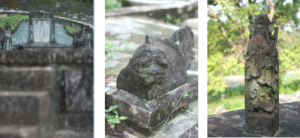
(from left to right): Stairway to Ng Boo Bee’s ‘residence’, mythical creatures, tomb guardian (photo collage Simone Lee)
The most valuable tomb in Taiping belongs to Ng Boo Bee. Penniless when he left China, he became the wealthiest man in Taiping from running tin mines, opium farms and construction. He was the first contractor to the British, building the first railway line in Malaya running from Taiping to Port Weld. He made many contributions to society during his lifetime. He built schools in Perak and China, public fountains, shophouses, donated land to the Hokkien Association and more. In fact, he built half of Taiping and owned many properties and plantations in both Perak and Penang. At death, his wake lasted for about 2 months to allow time for his friends to travel, some from as far as England. The entire town of Taiping shut down to join the procession, which took 4 hours to pass his house. Today, he rests on a 3-level tomb accompanied by guardian generals, lions and other mythical creatures, which showcase his wealth and influence while he was alive.
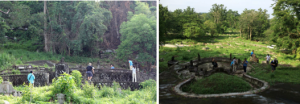
– (Left) As you walk up the hill towards Ng Boo Bee’s majestic tomb, you’ll see the 3-levels of the stone platform, which looks like a fort (photo by Bianca Polak) – (Right) The View from the back of Ng Boo Bee’s tomb (photo by Raymond Goh)
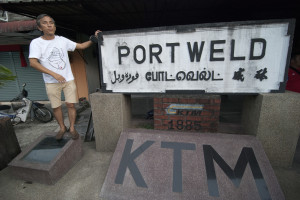
Our guide Ah Kew explains Ng Boo Bee built the first railway in Malaya for the British at Port Weld (photo Simone Lee)
Kwantung Cemetery Kwangtung Cemetery contains burials mostly of Cantonese and Hakka residence.
Taiping War Cemetery The fallen soldiers who defended Malaya from the invading Japanese forces were interred in this cemetery. There are 3 sections of the cemetery; the Christians (on one side of the road), the Muslims and Indians (on the other side of the road).

(from left to right): A tombstone for an Indian soldier, view of Christian side of the War Cemetery, and a tombstone for an English soldier (photo Simone Lee)
Amongst over 850 tombs are tombs of 4 volunteer soldiers. Three of them, Lim Poh Ann, Tang Bee Choon and Ong Kim Sai, were sent to fight in Singapore where they died. After the war, their bodies were returned and given a soldier’s burial.
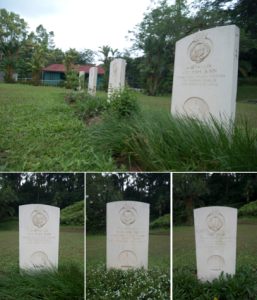
– (Top row) The 4 fallen soldiers who volunteered to defend our land. – (Bottom row) Lim Poh Ann, Ong Kim Sai and Tang Bee Choon were sent to Singapore, where they were killed in action (photo Simone Lee)
As more immigrants were brought in to work in the booming new town, many temples were built. A temple which has stood the test of time is the Sam Wong Yah temple. The temple was built by Loke Yew, a millionaire and philanthropist who came to Singapore to seek his fortune. He started work at a provision shop at Market Street until he saved enough to open one of his own. He then travelled to Taiping to explore the tin mining businesses. However, he did not do well and was soon broke. He sought shelter at the hut housing the Sam Wong Yah deities. One night, in a form of a white figure, he dreamt of the deities advising him to go further south to strike it rich. And strike it rich, he did. He returned to Taiping to build the temple around the hut where he had taken shelter.
In Singapore, a road was named after him (Jalan Loke Yew, opposite of the Peranakan Museum at Armenian Street) in honour of his contributions while the Cathay Gallery at The Cathay (founded by Loke Yew) showcases the history of the building and the Loke family.
Matang Museum aka Ngah Ibrahim Mansion Ngah Ibrahim succeeded his father, Long Jaafar as the Malay chieftain of Larut. He fortified his mansion by building thick brick walls around it, resisting the violence between the Ghee Hin and Hai San fights. Part of the wall was damaged by a Japanese war plane which crashed into it. In the mansion are stories and artifacts belonging to Ngah Ibrahim and showcased what the mansion was used as after Ngah Ibrahim was exiled in Seychelles. He was never allowed to return and died in Singapore (1887). In 2006, his remains were exhumed from Masjid Al-junied and reinterred in the compound of his grand old mansion which now is the Matang Museum.
Other Attractions
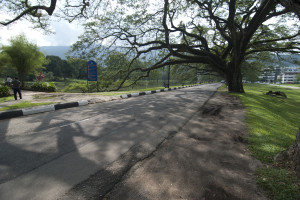
Taiping Lake Gardens, originally a mining ground, is the first public garden in Malaya since it’s conversion in 1880. The beautiful 120 year old rain trees line the road around the lake have been a hot subject as nature lovers fight to save them from urban threats. (photo Simone Lee)
Upon our return in Singapore, a fellow member of the Heritage Singapore – Bukit Brown group asked, “did you guys do anything else in Taiping but eat?”, questioning the amount of food postings (and food) we had on the our Facebook pages. We certainly did and visited many more places apart from the ones featured in this write-up but there is simply too much to write in just one post. Besides, the best way to learn more about a place is to be there in person. There are many more that we didn’t get to explore. We certainly fell-love with Taiping’s charm and hope to go back in the near future. If you do plan to visit Taiping, do contact Lee Ah Kew through http://ahkew.blogkaki.net Ah Kew is a freelance writer and field historian, whose knowledge and collection of folk stories would enhance your experience at Taiping. Ah Kew’s article on the Brownies 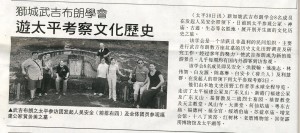
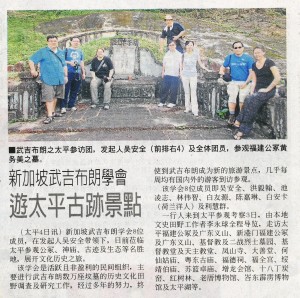
***********************
Editor’s note: If you have enjoyed Simone’s blog post and photo essay, do leave a comment and encourage her to do more. She is the “official” brownie travel concierge
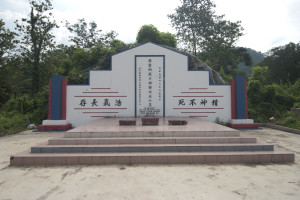
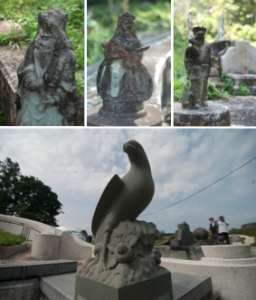

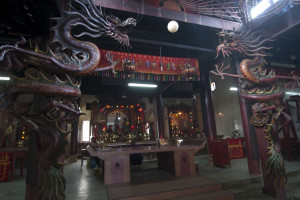
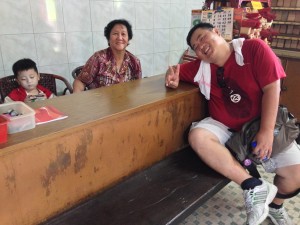
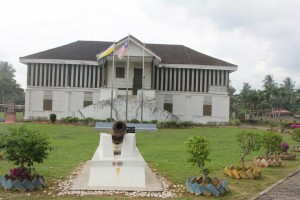
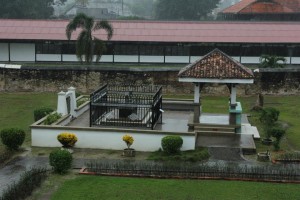
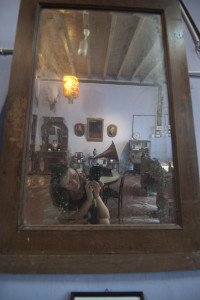

Comments